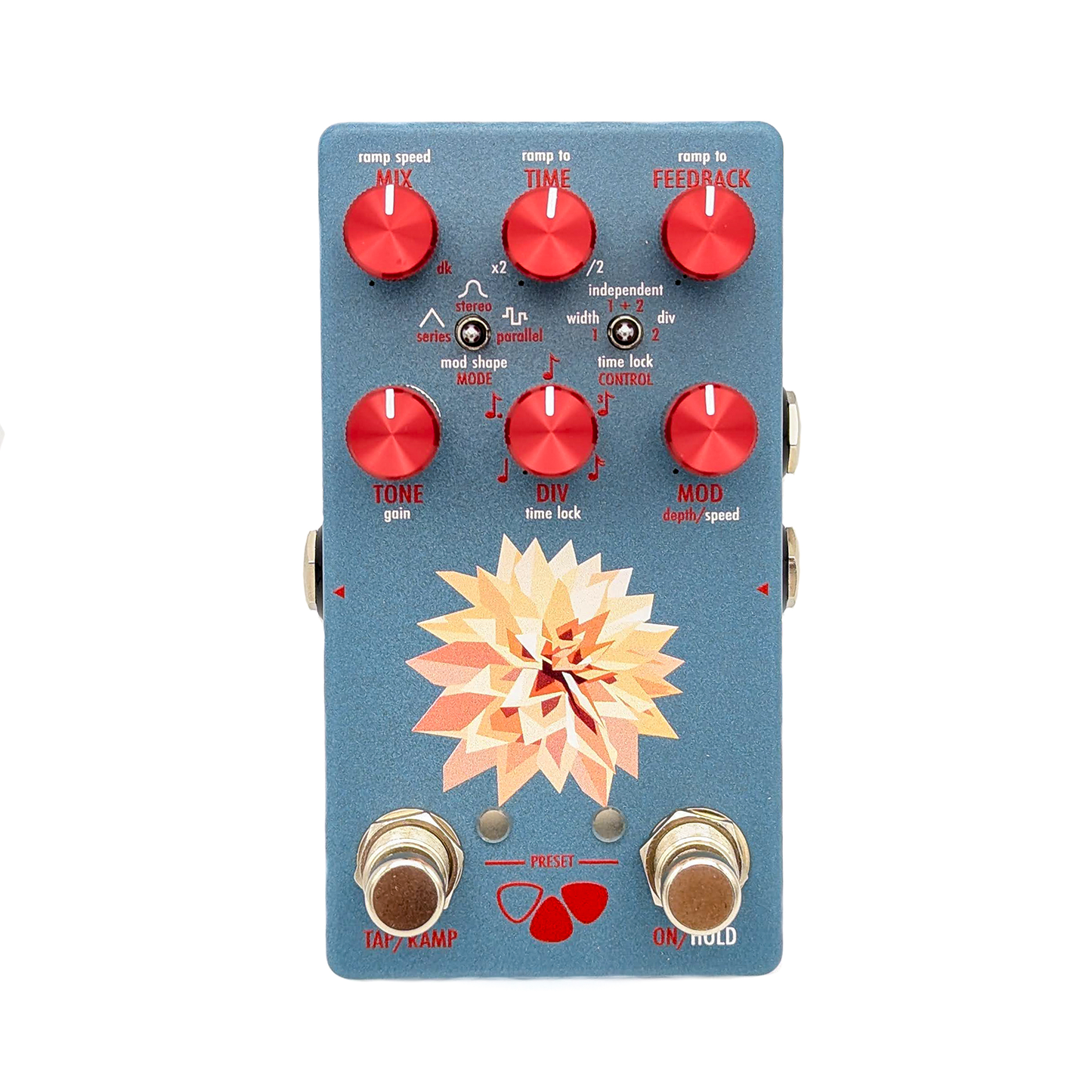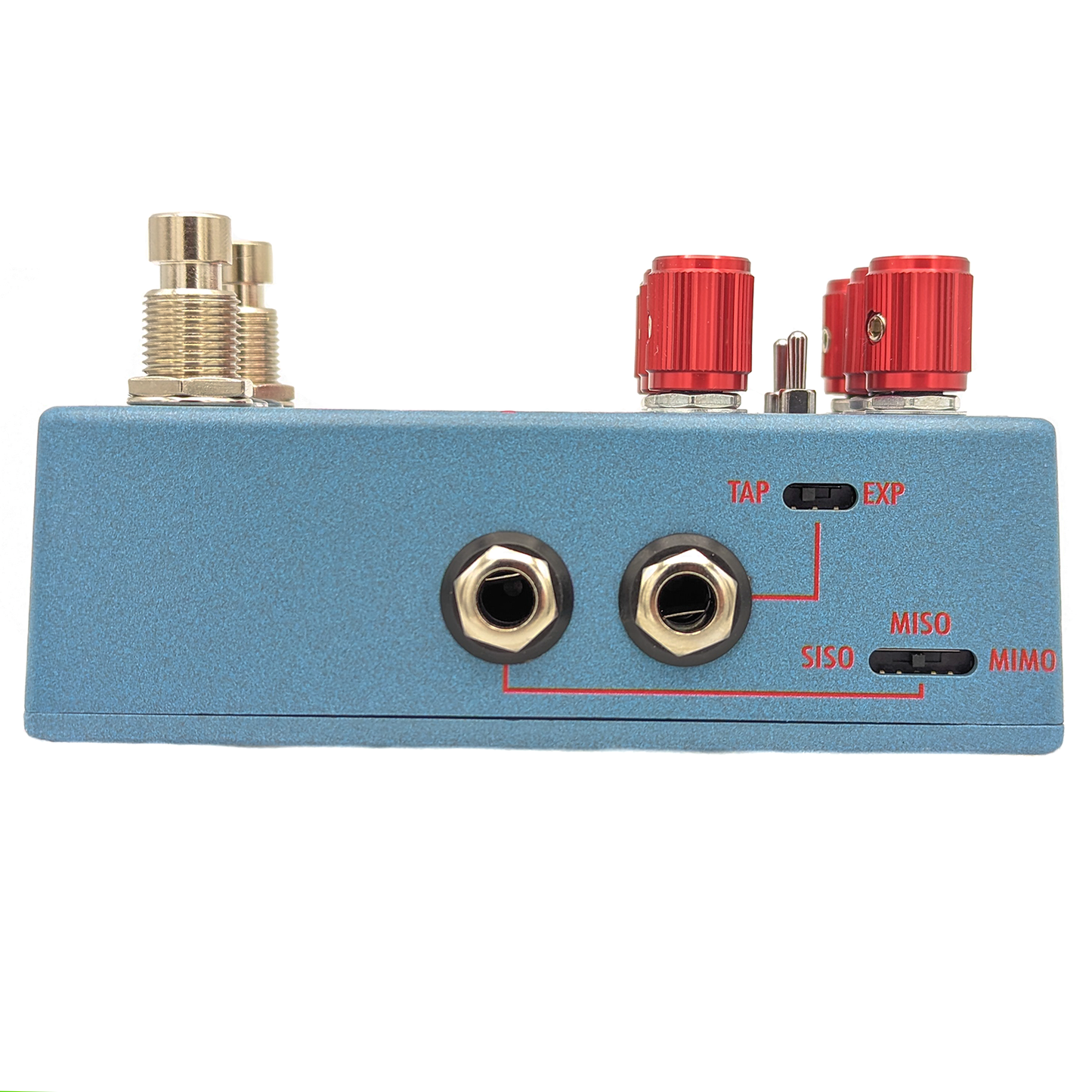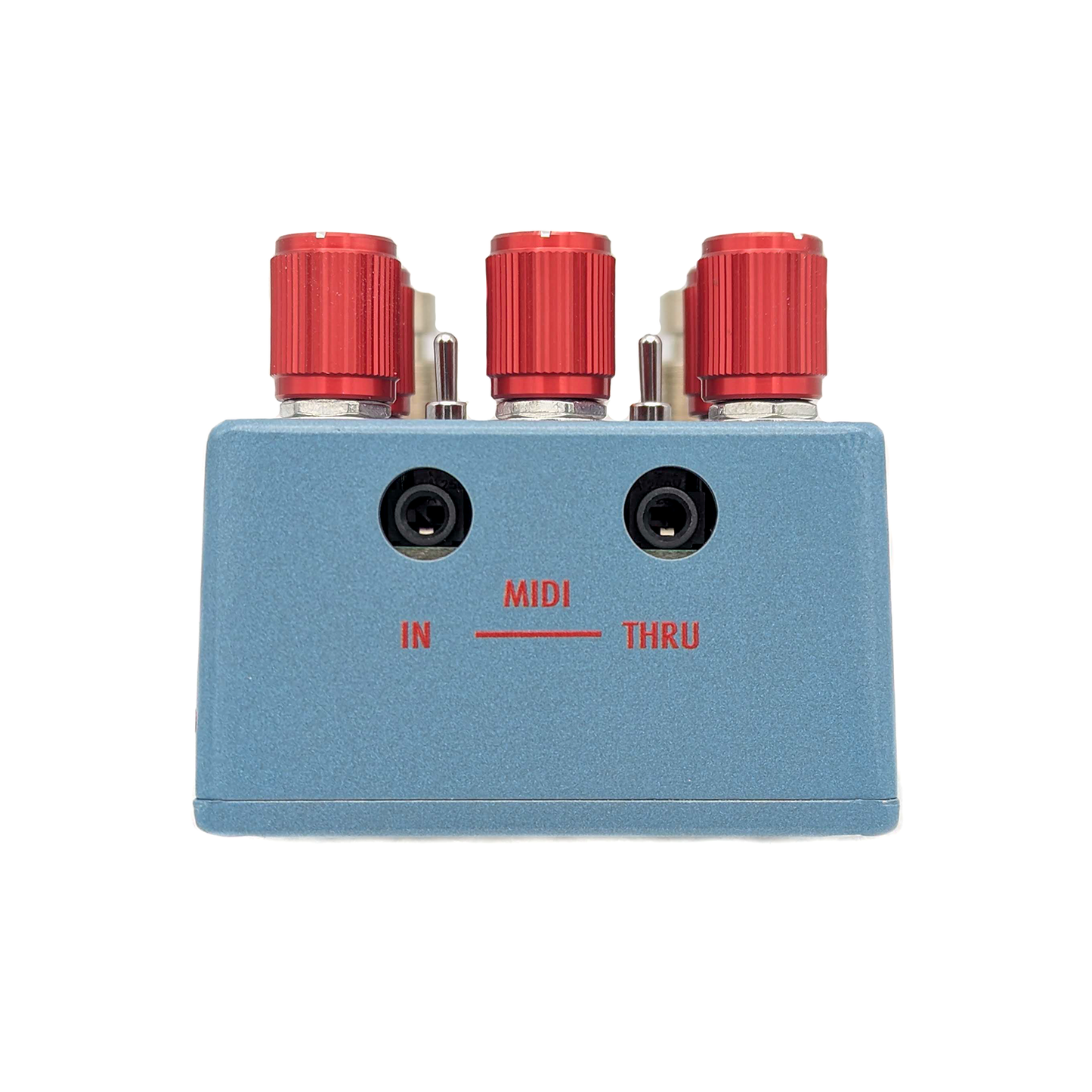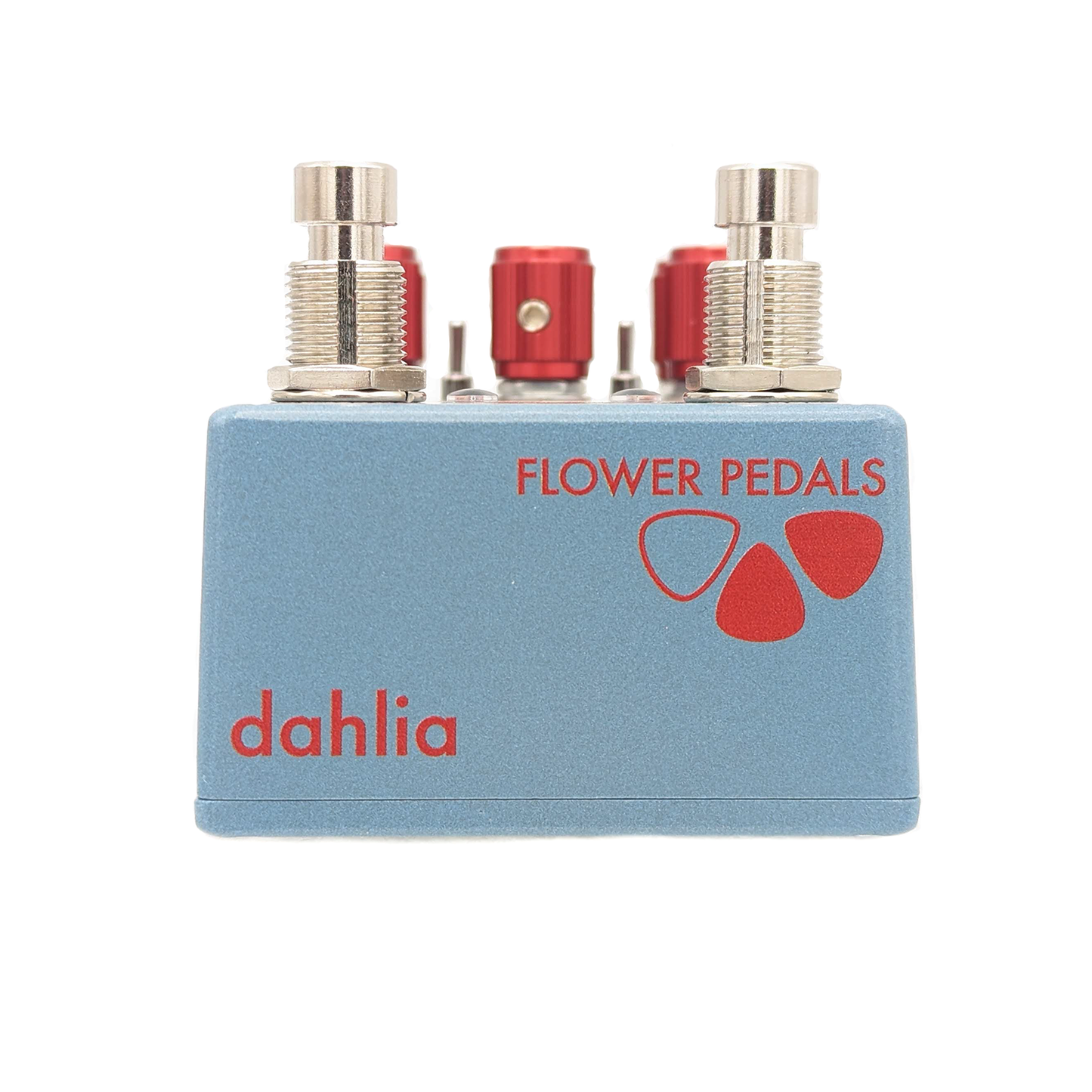Dahlia Dual Analog Delay
Dahlia Dual Analog Delay
Couldn't load pickup availability
Is there any effect more beautiful than analog delay? How about 2 analog delays? We've paired the beauty of analog delay with the beauty of the Dahlia flower to create the Dahlia Dual Analog Delay! It's a digitally-controlled, fully analog signal path, BBD analog delay pedal with two independent delay paths each offering up to 820ms of delay complete with true stereo ins and outs as well as preset and MIDI capabilities!
At the heart of the Dahlia is 2 analog delay pedals in one enclosure with independent control of every parameter of those 2 delays. These 2 delays can be run in 3 different configurations: Stereo, Parallel, or Series. Stereo mode allows the pedal to be run in true stereo with Delay 1 on the left side and Delay 2 on the right side. Parallel mode runs the same way, but instead of true stereo out, it outputs dual mono, with both left and right outputs being the mix of both delays. Series mode runs Delay 1 into Delay 2, once again outputting dual mono and allowing for Delay 2 repeats on the initial repeats from Delay 1. See the manual for a diagram on the routing of the signals in these different modes.
Both delays have 12 controls. The primary controls are the ones you would expect from a delay pedal; Mix, Time, Feedback, Tone, Div, and Mod Depth. Mix controls the volume of the delay signal added to the clean signal. The Mix knob can also toggle whether the dry signal is mixed in or not by turning the knob all the up. Time controls the delay time. Feedback controls the number of repeats that the delay will produce. Tone controls a low pass filter placed after the delay circuit to dial in brighter or warmer repeats. Div controls tap tempo divisions, ranging from quarter note to sixteenth note. Mod Depth controls the depth of modulation applied to the delay. Then there are the secondary controls; Mod Speed, Gain, Mod Shape, Ramp Speed, Time Ramp To, and Feedback Ramp To. Mod Speed controls the speed of the modulation applied to the delay. Gain controls the level of the signal heading into the delay circuit, allowing you to compensate for different input levels in order to achieve the best feedback levels and headroom. Mod Shape allows you to select between a triangle, sine, or random modulation waveform. Ramp Speed sets the speed of the ramping of both Time and Feedback, while the Ramp To controls allow you to set where the Time and Feedback will ramp to.
All of these aforementioned controls are independent for each delay, allowing you to set up two completely different sounding analog delays for each one. The Control switch allows you to select whether you are adjusting these parameters for just Delay 1, just Delay 2, or both delays at the same time. In addition, you are given the option to sync up the delay times of the two delays in three different ways via the Time Lock controls. With the Time Lock switch in the Independent mode, the delay time for each delay will be controlled by their respective time knob or tap tempo division. With the Time Lock switch in the Width mode, the Time knob or tap tempo only sets the delay time for Delay 1, while Delay 2 is set at a specified distance from Delay 1 via the Time Lock knob. This allows this knob to act as a stereo width control, thus allowing for a subtle separation between the two delays and creating a stereo image without making large differences in the delay times. With the Time Lock switch in the Div mode, it works the same way as Width, except now Delay 2 is set at a time division of Delay 1 with Delay 1's time being considered the quarter note. This allows for rhythmic, ping pong type delays.
In addition to all these controls, the Dahlia allows you to save and recall 6 presets using the onboard footswitches. All parameters, including both primary and secondary parameters as well as tap tempo, can be saved in a preset, which is rare for an analog pedal. You can save a preset simply by holding down both footswitches for 2 seconds and recall or iterate through the presets by simply giving a quick press to both footswitches at the same time. The Power LED will light up in different colors to help you know which preset is active. The addition of 3.5mm MIDI in and thru also allows you to control any parameter via your favorite MIDI controller. The Dahlia has an integrated optocoupler to allow for MIDI messages to be sent to it via standard type A TRS MIDI without the need for any special converter box. If you're looking for a MIDI cable to use with the Dahlia, we offer both 1/4" TRS and DIN to 3.5mm MIDI cables made by Revelation Cable Company.
The Dahlia has three 1/4" jacks on it: one for Expression pedal control or external Tap control (as selected by the small slide switch), one for Mono TS input or Stereo TRS input (as selected by the small slide switch), and one for Mono TS output or Stereo TRS output (as selected by the small slide switch on the input side). Due to the size constraints of the Dahlia, we were forced to use TRS ins and outs for stereo operation, but we think it's a small price to pay for an extremely versatile stereo analog delay in a compact package! If you're looking for a TRS to dual TS patch cable to use the Dahlia with other stereo pedals which only offer dual TS inputs or outputs, we offer these Y patch cables made by Revelation Cable Company.
Expression pedal control gives you even more options. Set the positions of any of the knobs for their primary and secondary controls in the heel and toe positions and then use your expression pedal to seamlessly glide between those settings. We even added the ability to copy settings from toe to heel and vice versa by holding the Tap/Ramp footswitch, allowing you to easily set up a base setting, then only modify what you want changed through the sweep. This allows you to do simple things such as controlling modulation depth or feedback with expression, or you can go crazy and set every parameter separately for each delay as you go from heel to toe! You can also save those expression settings to any of the first 3 presets and recall them as you wish.
The Dahlia is a culmination of several years of development and is meant to be the ultimate true stereo analog delay pedal, while also offering a multitude of functions that a mono user will also love. We think the Dahlia helps bring the wonderful voicing of analog delay into the modern era of stereo and MIDI control. Check out the coming demo videos and preorder one today!
The Dahlia operates on 9-18V center negative and consumes less than 250mA.
Note: The V1 of the Dahlia is nearly identical to the V1.5 which is currently being sold. The differences are the V1.5 adds the dry kill control as well as a 6th preset and the ability to store 3 expression presets instead of just 1.








